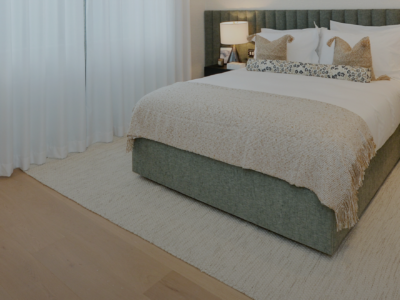
Technical Library
Floating vs Fully Bonding
Wood flooring must always be fitted according to BS8201:2011 and wherever possible an experienced wood floor fitter should also be used. This section is for guidance only as site conditions and subfloors will dictate the best method of fitting your floor. If you want your own builder or fitter to install your floor, they must understand that they take on full responsibility for the fitting of the floor and ensuring the subfloor is suitable. For more information or to arrange one of our recommended fitters to visit you, please call 01666 504 015.
Cost Comparison of Floating or Fully Bonding a Wood Floor on a SR2 screed
A common question arises when considering the installation method of a plank-format wooden floor onto a screeded subfloor: Should you ‘float’ or ‘fully bond’?
Floating, refers to a method wherein an underlay is placed onto the subfloor and the wooden floor planks are laid on top of the underlay. Nothing is bonded to the subfloor, hence the term ‘floating’.
Fully bonded, on the other hand, is where the floorboards are glued directly to the screed – sometimes with an acoustic layer involved such as Regupol. Regardless, the boards are bonded to the subfloor.
In modern developments, most concrete screeds will be SR2 (SR stands for Surface Regularity), and some may even be worse than this. It is crucial to know and understand the SR value your screed achieves, as it will impact the performance of anything placed atop it and heavily factor into the chosen installation method.
Floating a wood floor, whether it is a click-lock or tongue and groove, requires an SR1 screed. Typically, this means applying a latex or self-leveling compound to the subfloor to ensure it is sufficiently level. Failure to do so can result in spongy or bouncy areas of the floor because the boards are effectively suspended between high points on the subfloor. Other issues can also occur such as squeaking along the joints due to the rubbing of the locking mechanisms (particularly noticeable on click-lock profiles) or lipping where the boards join.
To bring an SR2 (or below) screed up to SR1, the supply and install cost to complete a latex layer is normally around £10.00 + VAT per m2.
However, you can fully bond a wood floor to an SR1 screed. We always recommend fully bonding using our SW-890 MS Polymer adhesive; it is an industry leading adhesive with a very high shear stregth. Our SW-890 MS Polymer adhesive can accommodate (spot level) variations in the floor of between 8mm to 10mm. The supply cost of this is around £5.00 per m2 (depending on the quantity ordered). This means we can look at a side-by-side comparison of the two fitting methods. The labour costs are indicative and based on research from several leading contractors in late 2023:
Process | Floating | Fully Bonding |
Supply & Install Latex/Levelling | £10.00m2 | £0 |
Supply Underlay | £1.95m2 | £0 |
Supply T&G Adhesive | £0.21m2* | £0 |
Supply SW-890 Adhesive | £5.00m2** | |
Additional Labour | £2.00m2 | |
Total | £12.16 | £7.00m2** |
*Only required for T&G profiles
**Variable on volume ordered.
From the above, we can see that whilst floating can be initially inviting due to the low m2 cost of underlay and T&G adhesive; ultimately the cost in subfloor preparation makes fully bonding quicker and more cost effective when dealing with an SR2 screed.
Please note that parquet flooring (such as herringbone, chevron, weaves and panels) must be fully bonded to a suitable subfloor. For more information, please view our technical library.
If you would like to discuss any of the points within this document or have queries around your project, please get in touch via info@thesolidwoodflooringcompany.com or by calling +44 (0) 1666 504 015.
Join our mailing list
Receive the latest news, offers and inspiration straight to your inbox.
